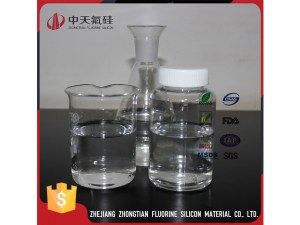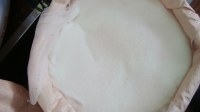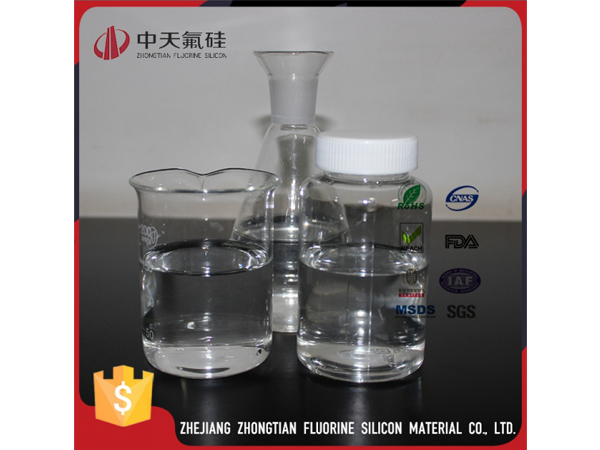 |
|||||||||||
|
Pro / B2B
Methyltrichlorosilane (M1)
|
|
Testing Items |
Testing Standards |
|
Methyltrichlorosilane /% |
≥ 99.5 |
|
Trimethylchlorosilane /% |
≤ 0.05 |
|
Dimethyldichlorosilane /% |
≤ 0.20 |
|
Tetrachlorosilane /% |
≤ 0.01 |
Application of Zhongtian Methyltrichlorosilane
It is mainly used for the production of methyl triethoxysilane, methyl trimethoxysilane, and other crosslinking agents, silicone resin, special coatings, construction waterproofing agent, and oilfield drilling anti-collapse agent (sodium methyl silicate), as well as gas-phase silica and other products.
Silicone materials, including methyl trichlorosilane, are not only as special materials used in military, aviation, aerospace, and other cutting-edge industries, but also widely used in construction, textile, automobile, machinery, electronic and electrical appliances, chemical and light industry, leather and papermaking, medicine and health, etc. To a certain extent, it reflects the development of a country.
Product Appearance of Methyltrichlorosilane
-colorless
-transparent liquid
-no mechanical impurity (Mechanical impurity refers to the precipitation of suspended matter in petroleum or petroleum products that is insoluble in oil and specified solvents, such as mud sand, dust, iron filings, fibers, and certain insoluble salts.)
-have a pungent odor
-easy deliquescence
Production Methods of MethylChlorosilane
There are two production methods of methyl chlorosilane-indirect method and direct method. It was invented by E.G. Rojo in 1940 and is produced by using copper or copper salt as the catalyst to make a direct reaction between methyl chloride and silicon powder at about 300℃. This is a complex non-homogeneous reaction. The resulting mixture mainly contains dimethyldichlorosilane (about 70%), followed by methyl trichlorosilane, trimethylchlorosilane, methyl dichlorosilane, etc. The product can be obtained by distillation. The product is obtained in pure form by distillation. Due to the exothermic nature of the reaction, temperature control is extremely important, and most fluidized bed reactors are now used.
Storage and Transportation of Methyltrichlorosilane
Storage: Stored in a shady, cool, and ventilated place. It should be kept away from kindling and heat sources, avoid direct sunlight.
Transportation: When transported, avoid rain and direct sunshine.
Description of Silane Crosslinking
Silane crosslinking is introduced into polyethylene by a silane coupling agent to increase the strength and aging resistance of polyethylene.
Since its introduction in the late 1960s, silane-based cross-linked polyethylene technology has grown considerably and gained wide application.
There is three main industrial silane crosslinking polyethylene processes: the two-step production process (also known as SioplasE), the one-step production process (also known as MonosilR), and the vinyl silane copolymer process, of which the vinyl silane copolymer process combines many of the advantages of the two-step and one-step processes and has greater advantages, but the cross-linking reactions in all three processes are accomplished by immersing silane-modified polyethylene mixed with a silanol condensation catalyst in warm water or water vapor. However, the cross-linking reaction in all three processes is accomplished by immersing silane-modified polyethylene mixed with a silane condensation catalyst in warm water or water vapor, and the water required for cross-linking is diffused from outside. Due to the non-hydrophilic nature of polyethylene, the diffusion of water in polyethylene is very slow, resulting in very slow cross-linking, and the thicker the wall of the product, the longer the cross-linking time.
Development and Application of Silane Crosslinking
The mechanical properties, heat resistance, chemical resistance, and stress-cracking resistance of polyethylene are largely improved by silane crosslinking, which broadens the range of applications. Silane crosslinking polyethylene is mainly used for the insulation of medium and low-voltage wires and cables, and are also one of its main applications, which can be used as hot and cold water , drinking water , for transporting corrosive gases and liquids in the chemical industry. China encourages and advocates the use of chemical building materials, and the development of cross-linked polyethylene has good market prospects and can create good economic benefits.
Silane Crosslinking Process
There are two main methods of silane crosslinking in practice, one is a two-step method invented by Dow Corning (UK), called the Sioplas method, and the other is a one-step method invented by BICC (British Insulated Cable Company) and Maillefer, called the Monosil method. In recent years, the silane copolymer method has emerged as a result of the attention given to polyethylene products by petrochemical resin manufacturers. The silane crosslinking process of both methods is as follows.
①Sioplas process
② Process of Monosil method
The silane copolymer method is actually a variant of the Sioplas method. The difference is that the polyethylene graft is not prepared by reaction extrusion, but by adding a second component (silane) to the copolymerization of ethylene during the polymerization of ethylene to obtain copolymerized ethylene? Silane copolymer (A material), cross-linking catalyst and other auxiliary additives and then by mixing equipment to make catalytic masterbatch (B material), and then according to A, B two-component products factory.
The Sioplas method is a two-step process in which two extruders are used to produce the PE silane graft and the catalytic masterbatch in advance, and then the two materials are mixed in a certain ratio to produce the cross-linked PE pipe on a third extruder. The peroxide used for silane crosslinking is used as an initiator, and the dosage is equivalent to about 1/?20 (0.1%) of the dosage in the peroxide cross-linking method. The silane graft is generally dry-mixed with a 5% catalytic masterbatch and extruded into molded products; the products are then cross-linked in a high-temperature water bath (60-95°C). The storage period of the silane graft in this method is short because the cross-linking reaction can proceed slowly even in the absence of the catalyst.
The Monosil method is a one-step process, which is characterized by the direct addition of silane, peroxide, and catalyst to the same extruder. The crosslinking degree of the products produced by the one-step process can be improved compared to the two-step process.
Personne à contacter : Cheng Doris, 05708598517
Bonne affaire : acheter au vendeur
Nous vous invitons à lire nos conditions générales d'utilisations. Vous pouvez aussi vous rendre sur nos FAQ et consulter notre page d'informations sur les risques liés à la contrefaçon.
|
Cette page concerne les importateurs et exportateurs de Methyltrichlorosilane (M1) Rechercher dans la catégorie : Pro / B2B Rechercher dans la catégorie : methyltrichlorosilane |
Mercredi 26 mars 2025
Quantité : 3 conteneu - Prix : 0,30 EUR/KG - 2,50 E
1. DESCRIPTION DU PRODUIT: Vêtements d´occasion d´été et d´hiver, pour des Hommes/Femmes/Enfants, Literie, et la Maison, classifiée dans des qualités A, B, et B + C 2. QUALITÉS: - Qualité A : Presque nef, incluent marques reconnues, et classifiée selon gendre, type, etc. - Qualité B ...
Euroafrique Recycling SL
- euroafritex
- 03203 - Alicante
- 965020177
- +34 9 65 02 01 77
- +34 6 32 82 94 61
Mardi 23 juin 2009
Grande liquidation la qualité à bas prix. pas votre chance, premier venu premier servi Nous somme une compagnie Canadienne qui Export et représente plusieurs produits de qualité à prix imbattables sur les marchés internationaux car nous avons des réductions sur tout nos produits en liquidation...
Canada Nor Export Inc.
- grossiste1206
- H3G 2w5 - Montréal(Québec)
Mercredi 23 décembre 2015
Quantité : 2000 Metri - Prix : $250/mt CIF
ICUMSA 45 is a highly refined sugar, and it is easily recognizable by its distinctive sparkling white color and pure Sucrose taste. It is suitable for human consumption and use in a wide range of food applications. It is perpetually in high demand as it is the safest form of sugar...
Khun Jack Partnership Limited
- 10150 - chaing Mai
- +66 9 56 19 49 81







